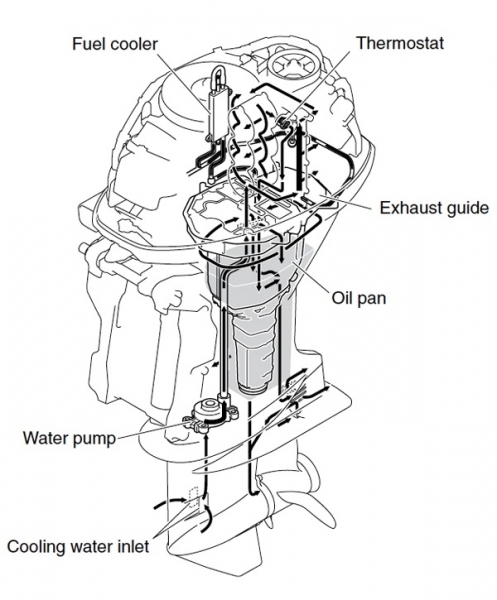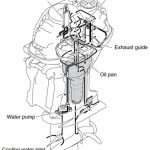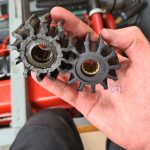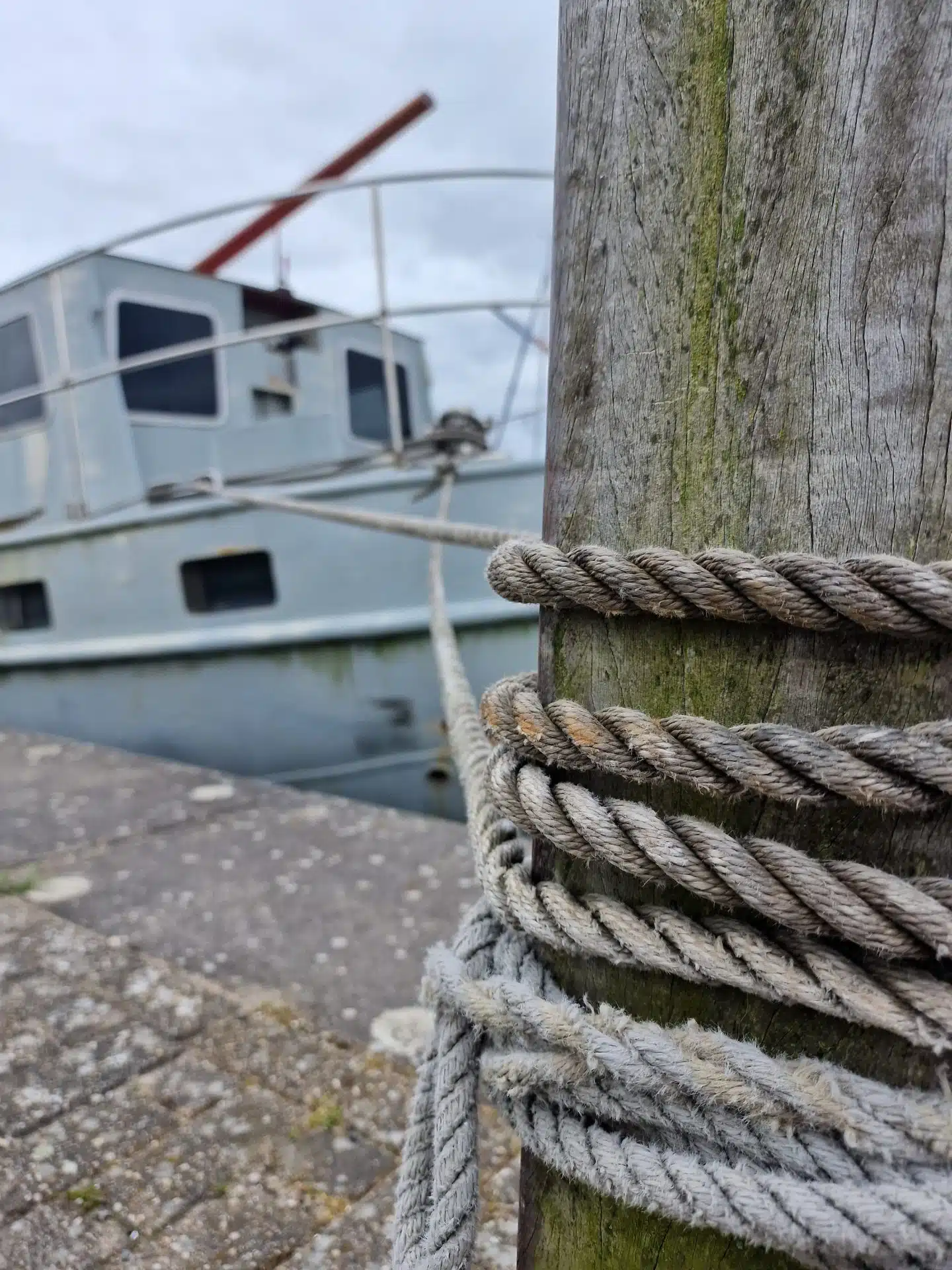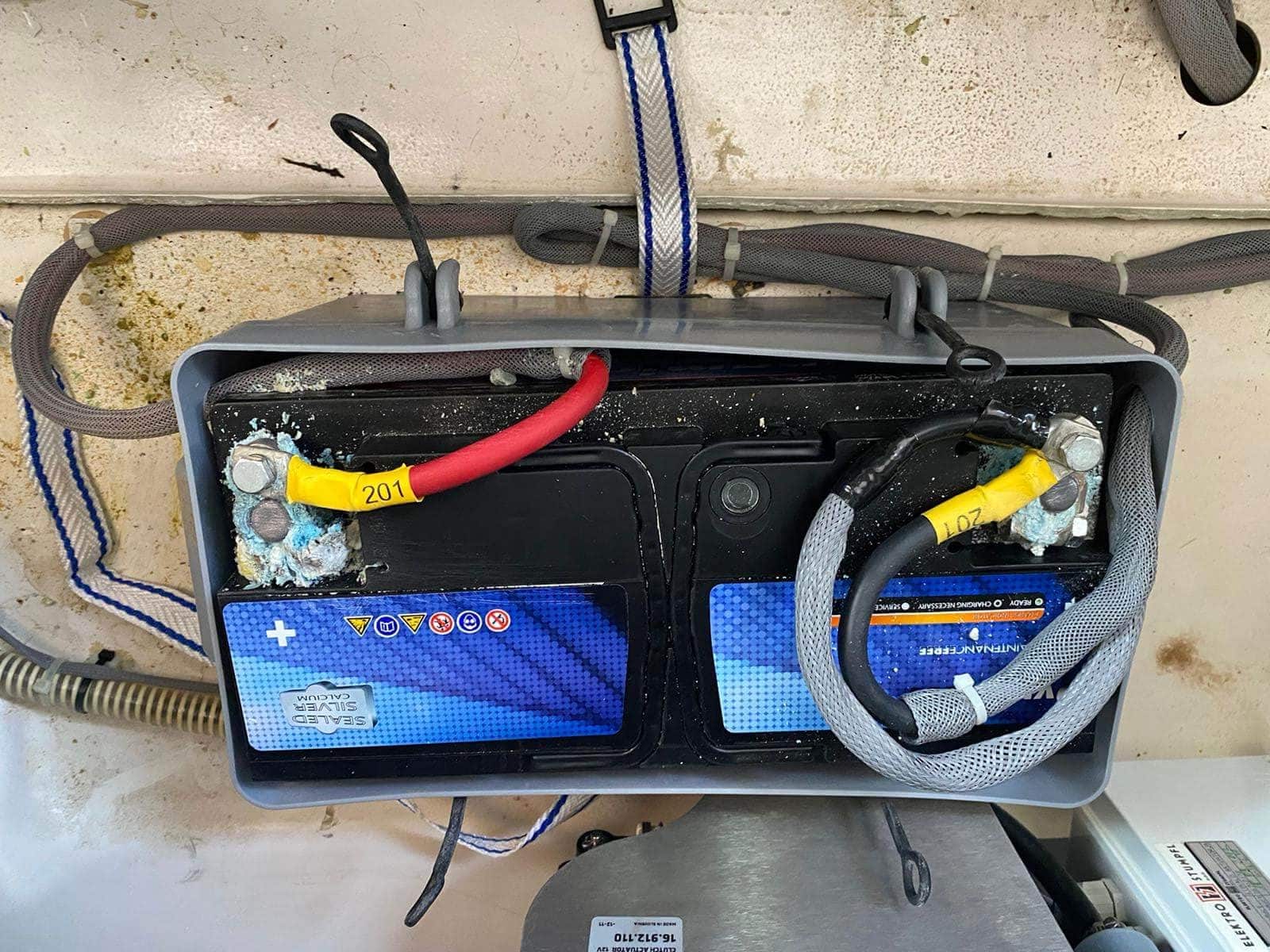Water from outboard motor exhaust, correct?
- Blog
- December 7, 2021
A modern internal combustion engine has an efficiency of about 30%. That is, out of all the energy contained in the fuel, 1/3rd is converted into useful energy (propulsion), while 2/3e is converted into heat. This heat builds up in the engine. The engine block and all parts heat up. For the engine to function properly, this heat must be dissipated.
Cooling system outboard motor
A boat's outboard motor has an open cooling system. That is, outside water is sucked into the tail, this outside water flows through the engine, then leaves the engine again. It is a relatively simple system.
Operation
The cooling system begins in the tail section. There, there are intake points that always remain under water while underway. A pump at the bottom of the tailpiece, in this case a rubber impellor, then pushes this water up into the engine, into the engine block. There the water passes through the entire block. When the engine is cold, the thermostats stay closed and the water continues to circulate there. This regulates the temperature of the engine. When the engine is at operating temperature, the thermostats open (partially), and the water is drained off. The water leaves the engine through the exhaust.
Water from exhaust
Outboard motors use an exhaust that sits underwater. The middle part of the propeller, is also the exhaust. This is where exhaust gases and cooling water are discharged. Some engines also have a secondary exhaust above water, from which cooling water can also come out. In addition, we see engines where water is also discharged under the cowl of the tail, which makes it look like the tail is leaking, but is usually just a function of the specific engine.
Indication beam
To check if the cooling system is working properly, outboard engines are equipped with an indicator jet. This is a jet of water at the side or rear of the engine. Check this periodically while cruising, but always immediately after starting. The jet should be fairly powerful and constant. If it becomes less powerful over time, or even stops altogether, the engine should be stopped and checked.
Common malfunctions
There are a number of sensitive points in an outboard motor's cooling water system, mainly:
- The impellor: this is a wearing part and should be replaced at regular intervals. If this is not done for too long it will lose its function.
- Thermostats: the temperature at which the thermostat opens can change over time
- Blockage: the cooling water passages in the engine may have become clogged with dirt, sand or other deposits
- Indicator jet: no indicator jet may indicate all of these problems, or the jet itself may be clogged
What happens when there is too little cooling?
Too little cooling will cause the engine to overheat. This will result in extreme wear and eventually a stall. Stalling means that the engine seizes, because the pistons become so hot that they expand and get stuck in the cylinder. This is often accompanied by damage and should be prevented at all costs.
What to do in case of failure?
Are you on the water and have to shut down the engine due to a lack of cooling water? Our subscribers get free towed to shore by our boat watch. Also, we can use the take care of repairs.
Need help choosing?
Need help choosing a subscription? Then use our handy selection guide.
Newsletter subscription
Fill out the form below to become a member of our newsletter
